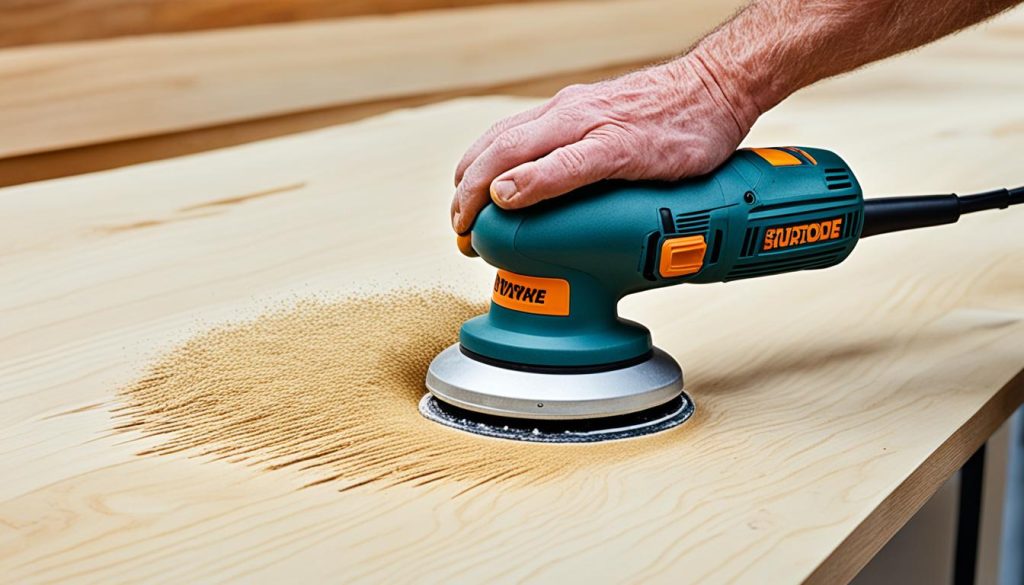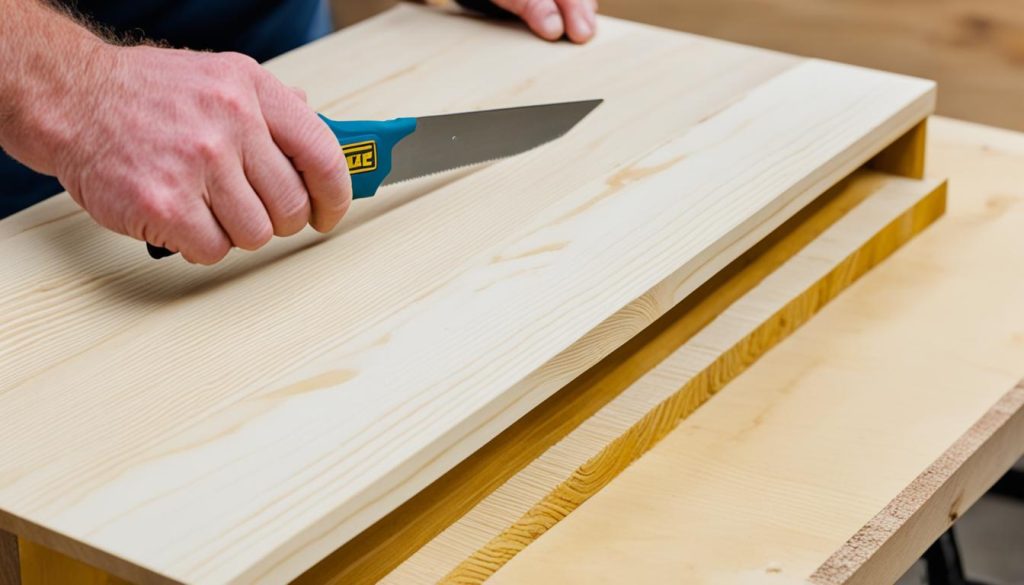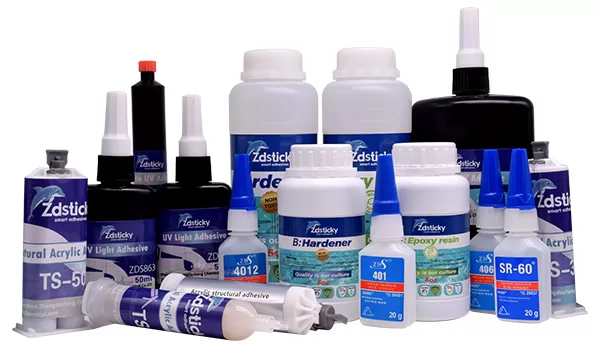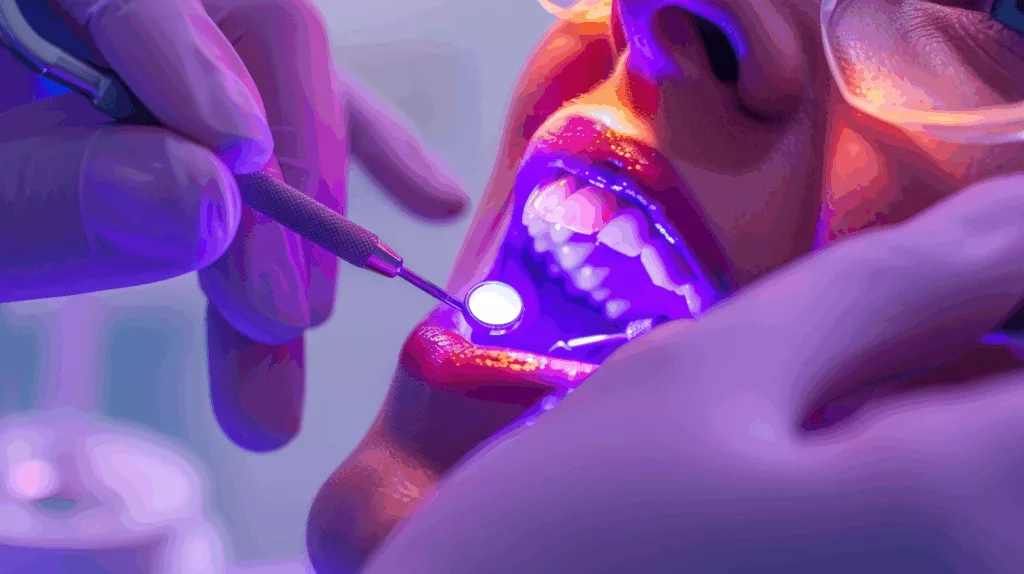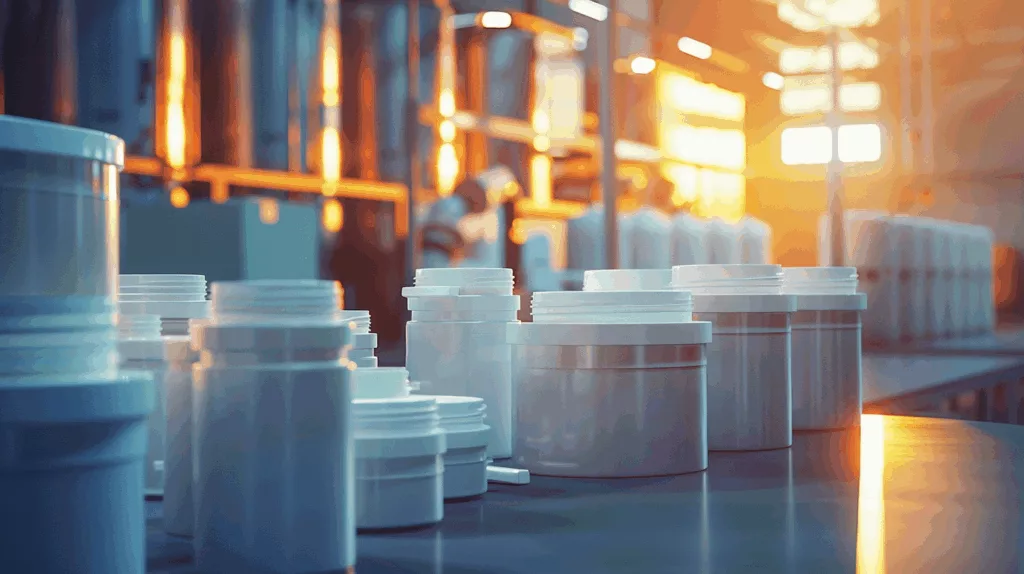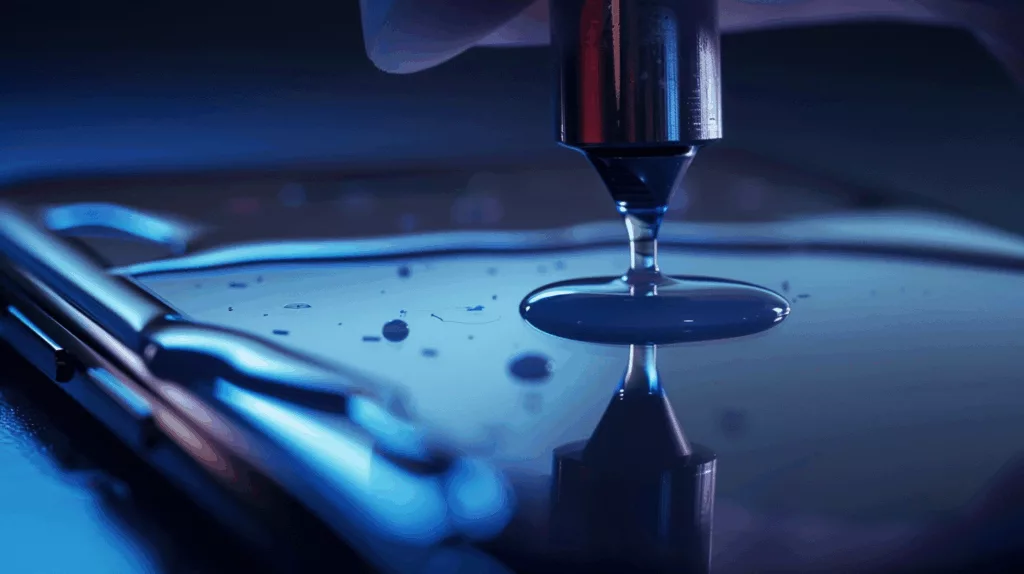Adhesives are key in making wood furniture last long and look good. They help stick parts together strongly and make the furniture look better.
Using top-notch wood glue means the furniture pieces fit together perfectly. This not only makes them strong but also beautiful. Plus, it saves money because it avoids extra screws that could ruin the look.
New glue technology has changed furniture making for the better. For example, ZDS™ is at the forefront, offering great glue that meets the needs of modern builders.
Knowing about these advancements helps us understand why glue is so important in making wooden furniture.
Key Takeaways
- Wood furniture adhesive is crucial for creating durable and visually appealing pieces.
- Premium wood furniture glue enhances seamless joint production.
- High-quality adhesives contribute to cost-effective manufacturing processes.
- Innovative adhesive technology has revolutionized the wood furniture industry.
- ZDS™ provides top-rated adhesive solutions for modern furniture makers.
The Importance of Adhesives in Wood Furniture Manufacturing
Choosing a reliable wood furniture bonding agent is crucial in making wood furniture. These adhesives hold the furniture together and make it last longer. That’s why finding the right type is a top priority for manufacturers.
PVA (Polyvinyl Acetate) glue is the favorite adhesive in this industry. It’s known for being versatile and comes in white, yellow, and waterproof types. It’s a go-to for both professional and DIY projects because it’s easy to use and strong.
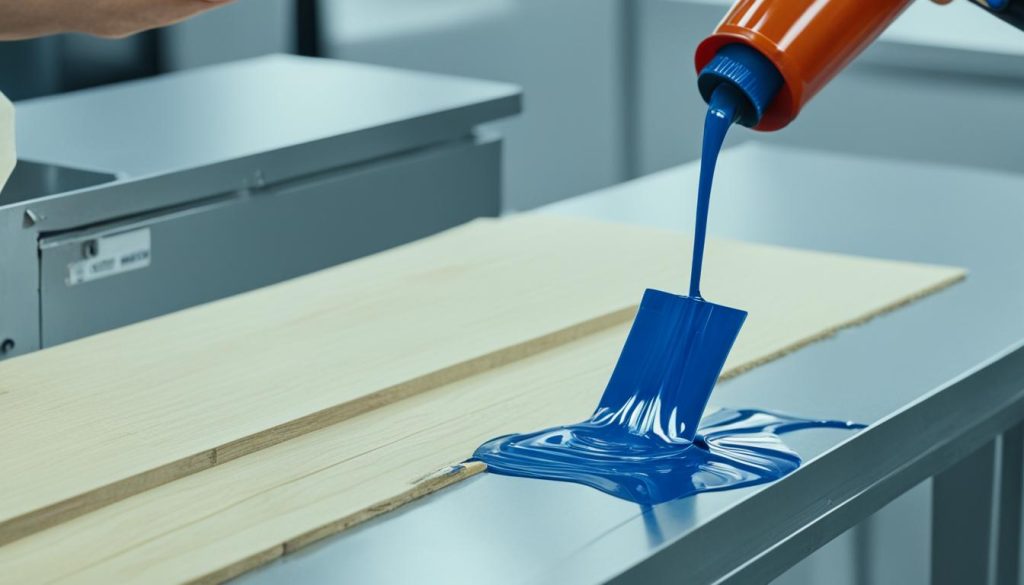
Urea-formaldehyde (UF) glue is another great option, especially for plywood and particleboard. It’s more water-resistant than PVA, which is great for items exposed to moisture. This ensures the furniture stays together for a long time.
Epoxy resins are known for their strong, waterproof bond. They are perfect for parts of furniture that get a lot of wear and tear. The right choice of adhesive is key to making quality furniture.
Hot melt adhesives, like ASA-8151 and ASA-3862, are designed for woodwork. They bond strongly and are easy to use. This makes the manufacturing process faster and the furniture more durable.
The choice of adhesive for wood furniture is vital for its quality and durability. Using the best adhesives makes furniture that lasts and meets customers’ expectations for a long time.
Companies like ZDS™ show how these adhesives are used in real life. Their use highlights the importance of choosing the right adhesive. It also shows the new developments in making strong adhesive for wood furniture.
Types of Adhesives Used in Furniture Making
Adhesives are key in building durable furniture. Knowing the different kinds aids in selecting the best for our projects. Let’s look at some commonly used adhesives and their benefits in furniture making.
PVA (Polyvinyl Acetate) Glue
PVA glue is a top pick for woodworking. It’s great for bonding joints, edges, and veneers. Its ease of use and strength make it perfect for various furniture tasks. This glue helps achieve reliable results, from small repairs to large assemblies.
Epoxy Adhesives
Epoxy adhesives stand out for their strength and durability. They’re ideal for tough tasks like fixing cracks and securing parts. 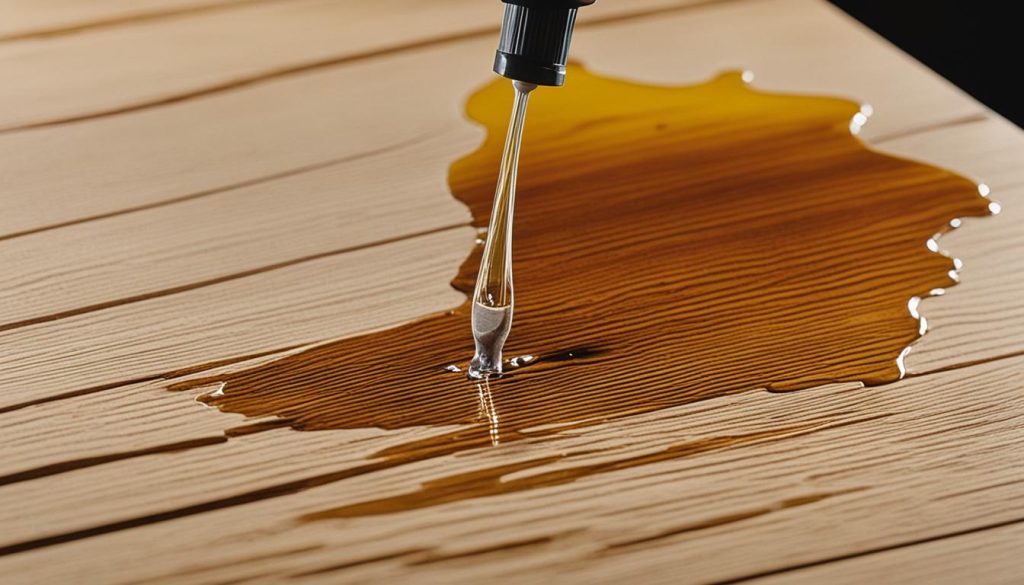
Polyurethane Adhesive
Polyurethane adhesive is great for bonding metal and wood. It’s useful for making furniture with mixed materials. This adhesive is common in tables and chairs that need a strong bond. Its flexibility and resistance to moisture make it great for outdoor pieces.
Cyanoacrylate Adhesives
Cyanoacrylate adhesives, also known as super glue, dry quickly. They offer a fast, strong bond for minor repairs. Perfect for metal-to-metal connections, they’re ideal for detailed work needing quick and precise bonding.
Each adhesive type has unique features for certain furniture tasks. Understanding these helps achieve the best outcomes for our projects. See how these adhesives are used in industry examples.
Choosing the Best Wood Glue for Furniture
Choosing the right furniture glue is key. Whether you’re a pro or a DIY fan, the right glue is everything. It starts with knowing the wood type. Different woods need different glues for the best bond and durability.
Bond strength is crucial for furniture that lasts. We want glue that sticks well and can handle changes in the environment. Water resistance is also key. For outdoor items or those in humid places, go for a glue that can resist water.
Then, think about the glue’s open time. This is how long you have to work before it sets. Projects with lots of details benefit from longer open times. It makes the work smoother and the end result stronger.
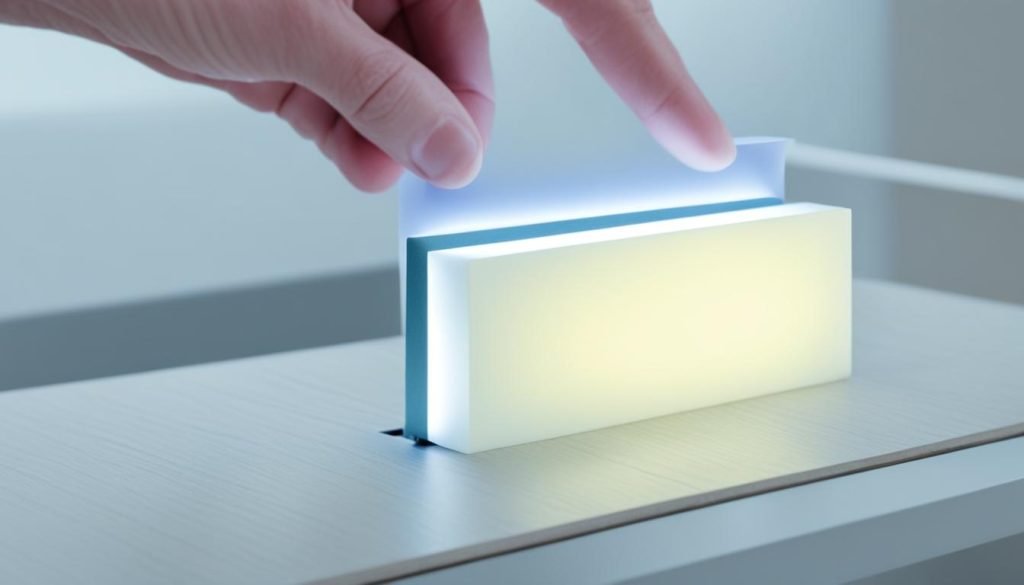
Here’s a handy guide to help you compare and choose the best wood glue for furniture:
| Adhesive Type | Bond Strength | Water Resistance | Open Time | Best For |
|---|---|---|---|---|
| PVA Glue | Medium to High | Moderate | 5-10 minutes | Indoor furniture, general woodworking |
| Epoxy | High | High | 30-60 minutes | Structural repairs, outdoor furniture |
| Polyurethane | High | Very High | 15-20 minutes | Hardwoods, projects needing strong joints |
| Cyanoacrylate | High | Low | Instant | Quick repairs, small joints |
At ZDS™, we’ve tested many glues to meet our high standards for making furniture. By considering the wood type, needed bond strength, water resistance, and open time, you can find the best glue. It’ll help your projects last.
Application Techniques for Strong Adhesive Bonds
For a good bond when using wood furniture adhesive, doing it right is key. Let’s look at the best ways to prepare surfaces, glue them, clamp them, and cure the adhesive.
Surface Preparation
Preparing surfaces right is the first step for a strong bond. Surfaces can be readied in three ways before gluing: physical, mechanical, or chemical methods. These methods depend on the material—like metal, wood, or plastic.
For wood, make sure it’s dry first. Use sanding to clean it off. Metals need certain cleaners, like special solvents. Plastics might need both cleaning and a primer for better bonding. Clean all items with solvents first to ensure they are as clean as possible.
Glue Application
How you apply the glue matters a lot. Spread the wood furniture adhesive evenly without using too much. Too much glue can weaken the bond. Using primers and accelerators can help the glue stick better, especially on tough surfaces.
Clamping and Curing
Clamping wood right after gluing ensures a close fit. Proper clamping spreads the pressure and avoids gaps. Each adhesive needs different clamping and curing times. Always check the manufacturer’s guide to get the best bond.
Here’s a summary of the steps to make your adhesive bonds strong:
| Step | Action |
|---|---|
| Surface Preparation | Physically, mechanically, or chemically treat surfaces; ensure they are clean and appropriate for the substrate. |
| Glue Application | Apply a consistent layer of adhesive; use bonding primers and accelerators as necessary. |
| Clamping Wood | Use appropriate clamping tools to hold the pieces tightly together, adhering to recommended clamping durations. |
| Curing Adhesive | Allow the adhesive to cure for the specified time to achieve the strongest possible bond. |
Being precise in every step of gluing, from preparing the surface to letting it cure, creates bonds that are strong and lasting. This enhances both the durability and quality of your wood furniture projects.
Innovative Uses of Adhesive Paper for Furniture
Adhesive paper for furniture is changing how we update and refine our furniture. Its ease of use is perfect for quick refreshes, loved by DIY fans and professionals alike.
Adhesive paper is all about flexibility and variety. It makes updating furniture easy, with many design options. You can modernize old pieces or craft something unique to your style.
Adhesive paper for furniture opens the door to creativity, personalizing pieces in ways once thought impossible.
Adhesive paper not only looks good but also protects your furniture. It’s great for turning a simple surface into something special. This way, our homes reflect our unique tastes.
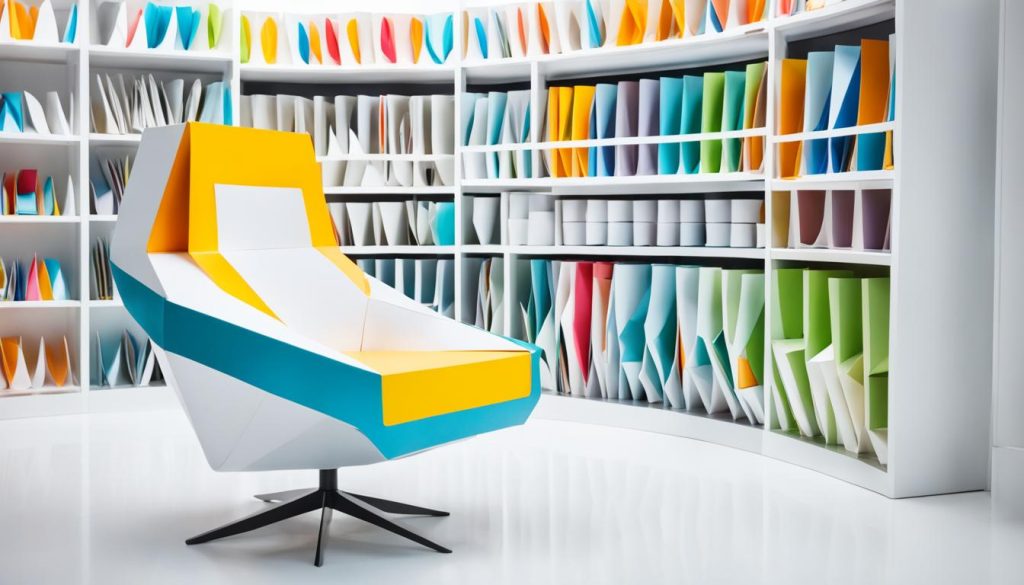
- Clean the Surface: Make sure the surface is clean and dry for the adhesive to stick well.
- Measure and Cut: Measure the surface, cut the paper slightly larger, ready for adjustments.
- Apply Slowly: Peel and stick the paper gradually, smoothing out bubbles as you go.
- Trim Excess: Trim off any extra paper for a neat finish.
With ZDS™ products, adhesive paper is key in innovative furniture solutions. It’s ideal for any project, offering simplicity and flexibility.
In summary, adhesive paper redefines furniture updates. It merges practicality with creativity for amazing makeovers.
Adhesive Furniture Anchors: Safety and Stability
Keeping furniture safe is key in homes with kids and pets. Adhesive furniture anchors boost stability and prevent accidents.
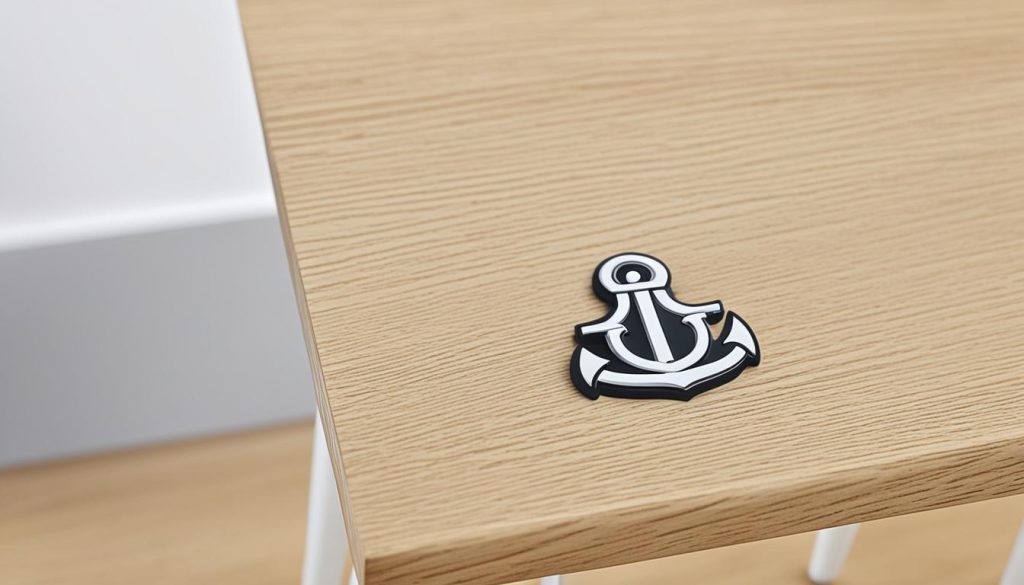
Today, we have many adhesive anchor types to choose from. They use strong adhesives to create a lasting bond. This method is easy to install and keeps furniture safe without damage.
Using these anchors makes furniture safer for everyone. The setup process is easy. Clean the surface, apply the adhesive, and attach the anchor.
Adding these solutions to our furniture is a sign of our dedication. ZDS™ provides top-notch products to help. They ensure furniture is both secure and stable, without compromising safety.
Wood Furniture Bonding Agents for DIY Projects
For DIY lovers, choosing the right wood adhesive for DIY furniture projects is key. It can transform an old piece or help create something new. The correct DIY bonding agents ensure professional results.
Here are some tips for your project’s success:
- Set your goal. Decide if you’re making a new piece or fixing up an old one.
- Pick the right adhesive. For general use, PVA glue works well. Epoxy is great for tougher jobs.
- Prepare surfaces. They should be clean, dry, and fit well together for the best bond.
Below is a table to help choose the right adhesive:
| Adhesive Type | Best For | Key Features |
|---|---|---|
| PVA Glue | General Woodworking | Easy to use, Non-toxic |
| Epoxy | Heavy-Duty Applications | High Strength, Water-Resistant |
| Cyanoacrylate (Super Glue) | Quick Repairs | Fast-Setting, Strong Bond |
Using the right wood adhesive for DIY furniture projects and techniques makes our work last. With ZDS™ products, hobbyists can achieve craftsmanship like the pros.
Repairing Wood Furniture with Adhesives
Keeping wood furniture in great shape requires regular care and repair skills. Learning to fix these issues helps our furniture stay like new.
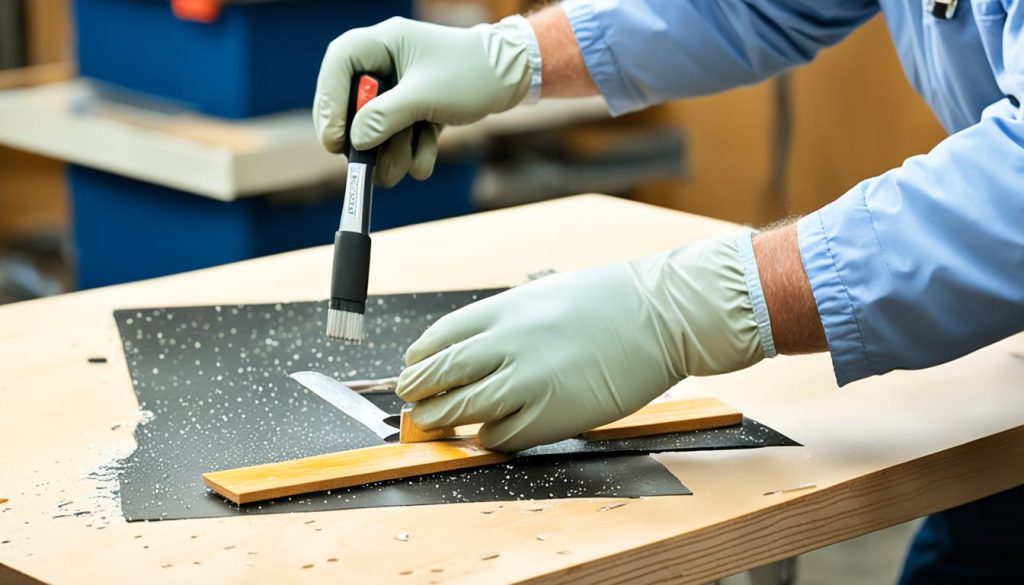
Identifying Damage
Before fixing, it’s important to identify furniture damage. This includes loose joints and scratches. Knowing the damage helps choose the right furniture repair adhesive.
Choosing the Right Repair Adhesive
Selecting the correct adhesive is key. Each damage type needs a specific glue:
- Cyanoacrylate (super glue) is best for minor fixes.
- For bigger issues like loose joints, use epoxy or polyurethane adhesives.
- General wood repairs work well with PVA glue.
Step-by-Step Repair Process
To repair, follow these steps:
- Clean the Area: Remove all dust and dirt. Use a mild cleaner.
- Apply the Adhesive: Use the glue as directed. Don’t apply too much.
- Clamp and Secure: For big repairs, clamp the pieces as they dry. This ensures a strong bond.
- Allow to Cure: Let the glue cure completely for best results. Follow the glue’s cure time.
Following this adhesive repair process lets us fix repairing wood furniture well. Each step is important for the furniture’s look and strength.
With top-notch products from ZDS™, we can professionally restore our wood furniture.
Conclusion
We’ve explored the world of wood furniture making, highlighting the importance of the right adhesive. PVA and epoxy, among others, have shown their worth. They prove crucial for crafting durable, beautiful furniture.
Preparing the surface well, applying adhesive correctly, and using the right clamping and curing methods are key. These steps help ensure furniture not only sticks together but lasts long. The use of adhesive paper and furniture anchors also shows how versatile and vital adhesives are.
If you’re making furniture, either as a pro or a hobbyist, knowing about adhesives is vital. We hope our guide helps you pick the right ones for furniture that lasts. With advances in adhesives, your wood creations can be strong and beautiful. Remember, brands like ZDS™ are ready to help with your adhesive needs.
FAQ
What is the significance of adhesives in wood furniture manufacturing?
Adhesives are key in making wood furniture last longer. They make the furniture strong and look better. They also help cut down on costs. Thanks to technology, these glues are now better and more flexible for furniture making.
Why are adhesives important for the structural integrity of wood furniture?
They keep wood furniture parts tightly joined. Their bond is often stronger than screws or nails. This helps make the furniture durable and long-lasting.
What types of adhesives are commonly used in furniture making?
Many adhesives are used in making furniture, like:- PVA Glue: Easy to use.- Epoxy Adhesives: Very strong.- Polyurethane Adhesives: Great for tough joins.- Cyanoacrylate Adhesives: Sets quickly, good for fast repairs.
How do I choose the best wood glue for my furniture project?
Think about the wood type, how strong the bond needs to be, and if it needs to resist water. Pick a glue that fits your project’s needs. For outdoor furniture, you’ll want something that can handle moisture.
What are the key techniques for achieving strong adhesive bonds in wood furniture?
For strong bonds:1. Make sure surfaces are clean.2. Apply the right amount of glue.3. Clamp pieces and let them cure as recommended.
Can adhesive paper be used innovatively for furniture?
Yes, adhesive paper can give furniture a new look, add custom designs, or protect it. It’s a simple way to make furniture unique and more durable.
How do adhesive furniture anchors contribute to safety?
They stop furniture from falling over, making your home safer, especially for kids and pets. These anchors attach furniture to walls or floors, adding a crucial safety layer.
What should DIY enthusiasts know about wood furniture bonding agents?
For DIY, it’s important to choose the right glue for top-notch results. Go for something strong, easy to use, and with the right curing time.
How do I repair damaged wood furniture using adhesives?
To fix wood furniture:1. Check the damage type.2. Pick the proper glue.3. Clean the area, apply the glue, and let it cure as directed. Choose a specialized repair adhesive for a durable fix.

